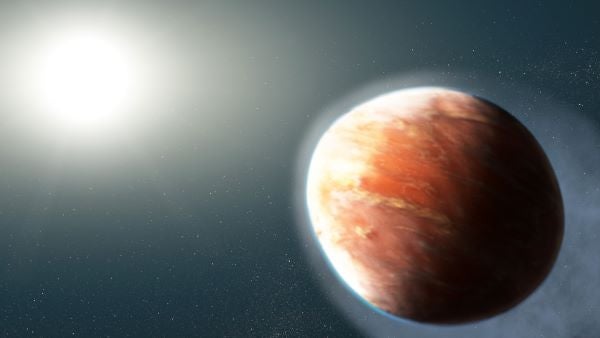A:Bodies large enough to be considered planets have enough mass that gravity molds them into a roughly spherical shape. The key word here is roughly — other factors also come into play, such as a planet’s composition (rocky or gassy) and its rate of spin. The faster a planet spins, the more its rotation causes it to bulge outward at the equator. That’s because as a planet rotates, there’s a tug-of-war between the way material wants to fly off the planet due to rotation and the way gravity wants to pull all that planet’s material inward. The battle between these forces is most intense at the equator.
In our solar system, Mercury and Venus are slowly spinning rocky planets; therefore, they are the most spherical of the Sun’s worlds. Earth and Mars spin a little faster, so they are about 0.3 percent and 0.6 percent thicker at the equator than the poles, respectively. This shape is called an oblate spheroid. However, because these planets have a solid surface that is higher in some places than others, they are not perfect oblate spheroids — they are minutely lumpy and bumpy, as data from orbiting satellites have revealed. In fact, the surface area of Earth’s Southern Hemisphere is very slightly larger than its Northern Hemisphere, making Earth marginally pear shaped. It’s important to note, however, that despite these deviations, Earth is almost spherical — if you used a basketball to represent the shape of our planet, its deviation from a perfect sphere would be only about 0.03 inch (0.08 centimeter) at the middle.
The gas giants Jupiter and Saturn bulge outward the most — Jupiter is nearly 7 percent thicker at its equator than its poles, and Saturn is 10.7 percent thicker around the middle. Ice giants Uranus and Neptune have smaller central bulges, only 2.3 percent and 1.7 percent thicker at the equator, respectively.
What about exoplanets, though? Some planetary systems we’ve found experience much more extreme conditions, with large, gassy planets orbiting very close to their stars (called hot Jupiters). One of these hot Jupiters is WASP-121 b, which orbits a blazingly hot star. In fact, this planet orbits so closely to its star that gravitational forces have stretched it out into a football shape. Astronomers believe that if the planet were much closer to its star, it would be ripped apart entirely.
In addition to its stretched-out shape, WASP-121 b and other planets, including WASP-69 b and KELT-9 b, appear to have puffed-up atmospheres and cometlike tails. These tails form as their host star blasts the planet with high-energy radiation, knocking gas particles into space.
As for pear-shaped exoplanets, astronomers haven’t found anything to suggest they exist to the extent you’re likely picturing. Other terrestrial planets likely have deformations similar to Earth’s — or perhaps slightly more extreme — but even “extreme” in this case probably translates to a planet appearing essentially spherical from a great distance.










